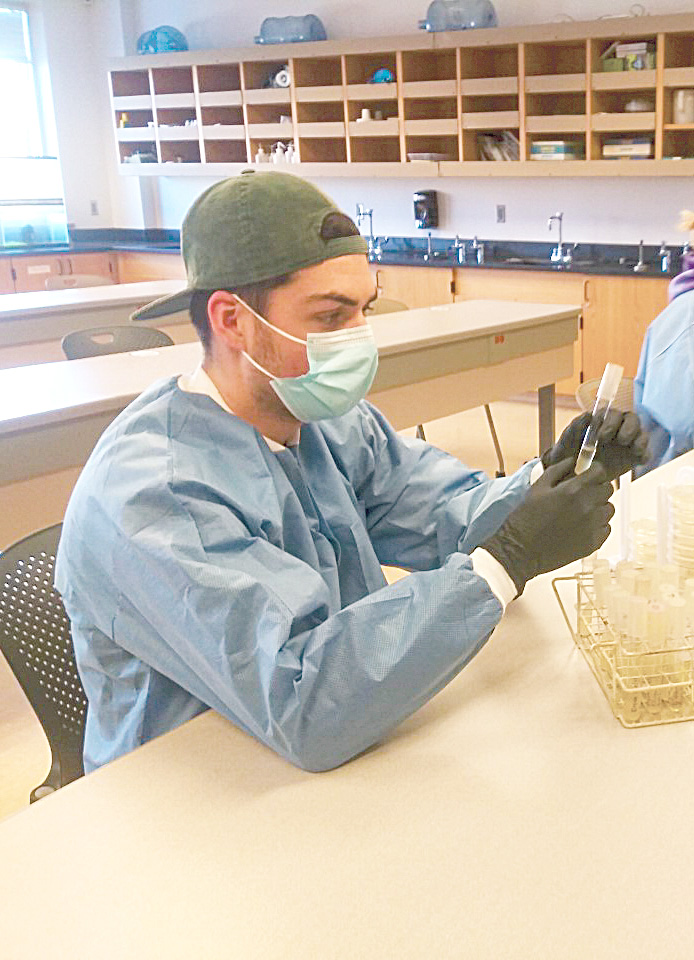Discovering naturally occurring microbes from local soil

For students tired of mundane biology labs, Utah State University Eastern offers a real-world research alternative to freshman and sophomore students. Thanks to Dr. Wayne Hatch, associate professor of biology, first- and second-year students can participate in the Tiny Earth program.
Hatch began teaching at USUE in 2012 and learned about Tiny Earth in 2015. He applied for training immediately and was teaching the program by spring 2016.
Tiny Earth is a world-wide, student-sourced research program. Its research addresses the issue of antibiotic resistance with the goal of discovering naturally occurring microbes that produce anti-microbial chemicals from soil in students’ backyards.
At the end of the project, students submit their findings to a Tiny Earth database and can send their isolates to a central hub at program headquarters at the University of Wisconsin-Madison.
Ultimately, Tiny Earth hopes a pharmaceutical company will take the samples and create new varieties of antibiotics.
Freshmen and sophomore students who need to take biology II have the option of taking this research-based class from Hatch. Students collect local soil samples which are diluted in a multi-step process and placed on various media types in petri dishes. The dish is put in an incubator and the resulting growth is screened to observe if there are organisms inhibiting the growth of other organisms.
These organisms are tested against “safe relatives” of real pathogens such as Staphylococcus. Students then purify social microbes and isolates. They conduct DNA sequencing and further characterize the organisms to identify their physiology. At the end of the project, students try to extract actual antibiotics and test them against pathogen relatives.
To finish the project, students create a poster of the process and their findings. The results are normally presented at a USU research symposium, but due to COVID-19, the poster session is shared with classmates and other biology students.
This semester, biology students began their Tiny Earth project on Feb. 4 and continue their research into April.
Occasionally, students have to go back and re-do a step or start again. Other than running into this frustration, Hatch says “It’s fun and most students really enjoy it, especially compared to traditional biology labs.” He enjoys teaching the program because “through the process, students learn first-hand how the scientific process works – careful notetaking, techniques with learning the microbes and working with true unknowns. You don’t want to contaminate the soil with your own microbes, so you have to learn to be careful,” he said.
The students have the opportunity to present their findings, which to Hatch, is one of the best parts, and enjoys taking students to conferences. A few years ago, he had the opportunity to take a student to New Orleans, Louisiana, to present his findings. Last year the conference was held online due to COVID-19 and it is likely the conference will be online this year as well.
The Tiny Earth program has been taught at USU-Uintah Basin by Dr. Lianna Etchberger. Hatch’s old biology professor in Idaho also participates in the program. He discovered this when accidently bumping into him at the Tiny Earth training.
When their research is finished, students submit their isolates to the Tiny Earth database. There is a map on the website showing locations of where samples have been collected from around the world. “This is a library of potential antibiotics,” Hatch said. To view the map or find out more, visit the website at tinyearth.wisc.edu.




